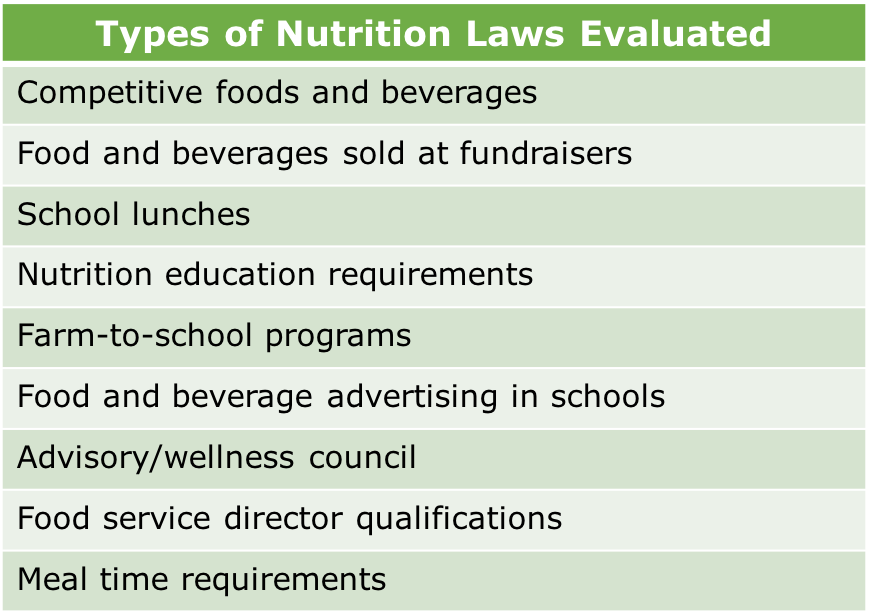Do State School Nutrition Laws Reduce Childhood Obesity?

Children spend more time at school than any other location outside of the home. That’s why addressing the school environment is critical to reversing childhood obesity, which remains a serious public health problem with 17% of school age children obese. To combat this problem, many local, state, and federal agencies have enacted policies to improve school nutrition standards. The 2010 federal Healthy, Hunger Free Kids Act gave USDA the authority to set nutritional standards for foods sold in schools, and several states had already enacted laws requiring higher school nutrition standards.
Prior research evaluating the effect of these state laws has shown that stronger state laws governing school nutrition are associated with improved dietary intake, but when it comes to reducing obesity, the research studies have found mixed results. Many of these studies only focused on one policy or evaluated children in 2007, before the potential impact of these laws would have had time to unfold. With these issues in mind, our research team examined the association between a broad range of school nutrition laws and children’s weight in 2011 and 2012. To do so, we evaluated nine varying types of nutrition laws and whether they were associated with decreased rates of obesity.

Utilizing a database that scored state nutrition laws as either none, weak or strong based on national standards and recommendations, we assessed the laws’ impact on weight status across states, controlling for child, family, neighborhood and school characteristics. Strong laws contained specific and required standards for schools. Meanwhile, weak laws only recommended standards, instead of requiring them. For example, a strong law required schools to provide a minimum of 20 minutes for students to eat lunch while a weak law only recommended it.
Of the nine laws evaluated, we found two types of state laws associated with decreased obesity: 1) competitive food and beverage and 2) advertising laws. Competitive food and beverages are those foods and beverages sold outside of the federal meals program, such as in vending machines. In our evaluation, strong laws restricted the sale of unhealthy foods and beverages in schools, such as sugar-sweetened beverages. The 31 states with strong laws were associated with a 7.1% lower rate of obese elementary school students when compared to the 17 states with no law.
We also found that states with strong advertising laws had lower rates of obesity. These laws limited the advertising of foods and beverages that do not meet federal dietary guidelines. The two states, Maine and New Jersey, with strong advertising laws across all grades had a 5% lower obesity rate when compared to the 46 states with no advertising laws.
Surprisingly, the vast majority of laws examined were not significantly associated with weight status. The reasons for this are unclear – some laws may require more time to see a change in student weight and other laws may have been insufficiently implemented in schools. It is encouraging, however, that we found two types of state laws associated with decreased obesity. While further research is needed to determine the causal effect of these laws, our findings suggest that states with strong laws limiting the sale and advertising of unhealthy food and beverages in schools are associated with decreased obesity rates.

